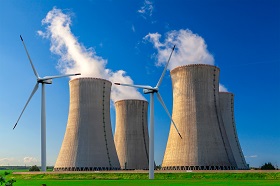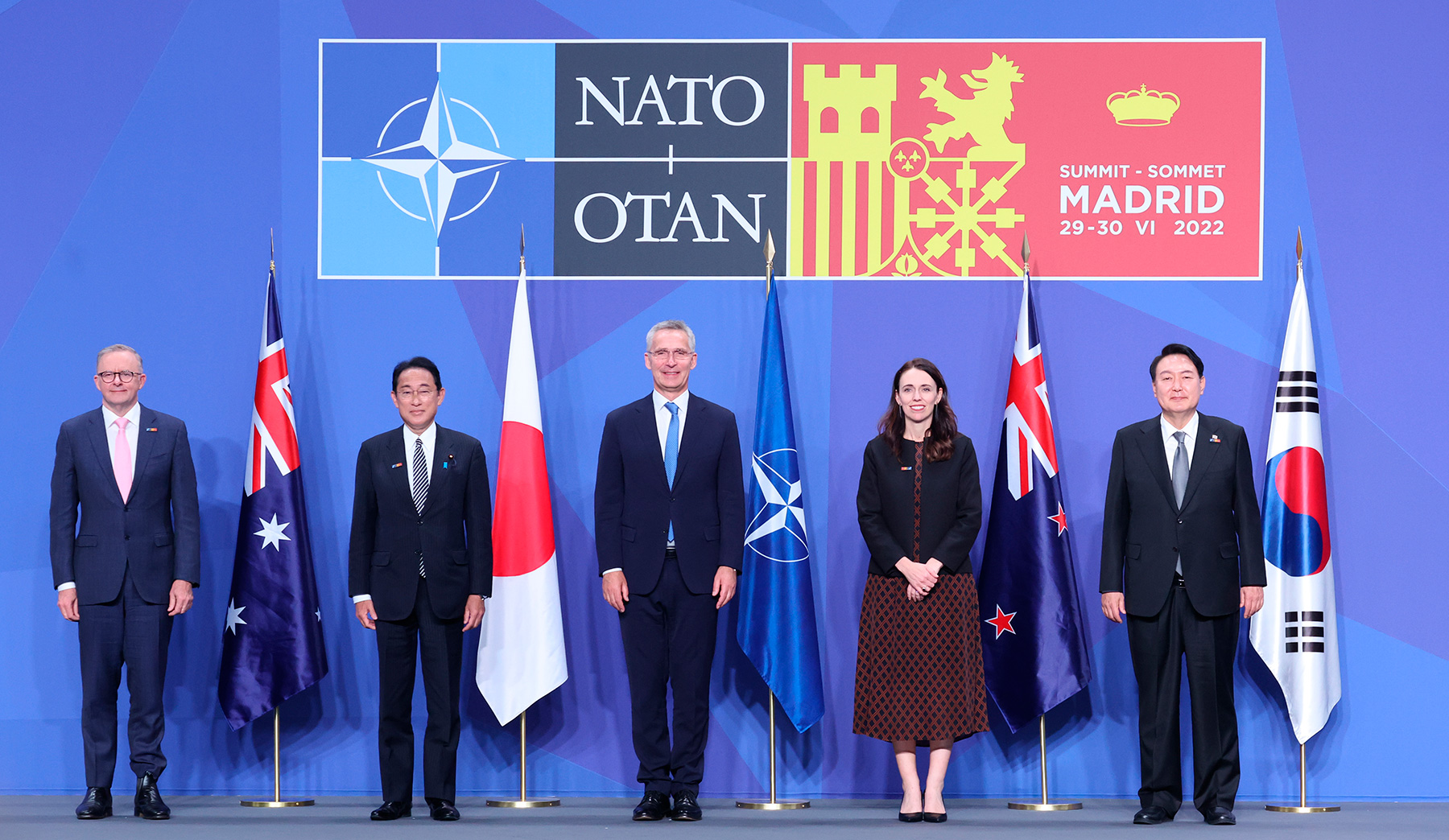Japan cares for its national interests despite its unrelenting support of the U.S. policy in Asia-Pacific. From this perspective, a sharp drop in cooperation with Russia brings Tokyo no benefits, since it will bolster the Russia–China alliance, decreasing Japan’s own influence in the region that holds crucial significance for the country and pushing further off even an illusory possibility of the territorial dispute around the Southern Kuril Islands resolved in Tokyo’s favor. Certainly, Kishida’s revamped government will act cautiously, avoiding shocks in the energy sector that is critical for Japan.
As for NPPs, polls demonstrate an increased approval of plans to partially recommission nuclear power plants over instability on global energy markets prompted by anti-Russian sanctions. Relying on those polls, Fumio Kishida has made a number of careful statements to the effect that several nuclear power units are expected to be commissioned in addition to the ten currently operational (as of June 2022).
As of 2021, the gross installed capacity of Japan’s power stations taken altogether totaled 312 GW, including distributed generation, which yields about 980 billion kW per hour of electric power. Currently, such bodies as the International Energy Agency and Japan’s Institute of Energy Economics predict that power generation will not change much by 2030 and will remain roughly at the present level, mainly because of the ongoing recession in Japan’s economy, because of low business activity, and because of a gradual decrease in population.
It took Japan over a decade of hard work on revising its comprehensive energy policy that had essentially gone back to square one after the tragic events of March 2011. It was necessary to strike a balance between abandoning nuclear energy and preserving a favorable environment jeopardized by a sharp increase in burning crude oil, coal, and natural gas at thermal power stations. Another exacerbated problem is the diversification of primary energy resources required for petrochemistry and natural gas conversion, not to mention related industries. Nonetheless, the country today is going back to the situation when it cannot do without NPPs.
Considering the overall situation with long-term implementation of Japan’s energy policy, it is complicated by major competitors emerging on the global market. In 2021, China outstripped Japan as the world’s largest LNG importer, and Chinese companies are actively looking for new LNG projects and developing the existing ones abroad (in Asia, Africa, Latin America, not to speak of cooperating with Russia and building Power of Siberia-2 pipeline), all to make sure they have the necessary supplies today and for the foreseeable future. The same holds true for oil deposits outside China. Europe is contributing, too, as it strives to radically decrease its dependence on Russian oil and gas and, accordingly, is searching for alternative suppliers. Taken together, these developments will only bolster global competition for limited oil and gas resources until new capacities are built and put into operation, which will take several years.
On August 10, 2022, Japan’s cabinet, in office since October 2021, resigned in a body following a drop in its approval ratings from 59% to 46%, which resulted in major reshuffles in the Japanese government. This step largely stemmed from problems in the economic situation deteriorating over growing prices on imported primary energy resources as well as from the uncertainty concerning long-term deliveries of said resources from Russia in the longer run. In June, imports of Russian oil dropped to zero, prompting several companies to sign additional agreements with suppliers from the Persian Gulf. Consequently, Japan’s dependency on oil imports from the region has increased to over 90%, which essentially nixed many years of diversification efforts.
Japan’s trade balance deficit has reached record highs in July 2022, with the decisive cause being—alongside the hike in resource prices—the yen-dollar exchange rate drop. Since early 2022, Japan’s currency has lost about 18%, another twenty-five-year record of over 128 yen to the dollar. It resulted in a significant drop in business activity domestically, while export-oriented manufacturers, who form the backbone of Japan’s economy, began to crank up exports to receive more U.S. dollars. Japan’s Prime Minister Fumio Kishida mandated additional steps to balance the situation. These included not only resuming Russian oil exports but also re-signing contracts to buy LNG from Sakhalinskaya Energia, the new operator of Sakhalin-2 established pursuant to the Order of August 2022 issued by Mikhail Mishustin, the Prime Minister of the Russian Federation.
In late July 2022, the minister of economy, trade and industry sent a clear signal to Japan’s oil traders, saying that Japan’s government does not call on companies to continue with their refusal to purchase Russian oil as part of supporting Western sanctions since it is up to the companies alone to decide whom to purchase oil from. Clearly, this is a somewhat disingenuous statement as Japan’s government sets quotas on imports of energy resources and knows ex officio where these resources come from. As for the imports of Russian gas, so far, not a single one out of eight Japanese companies getting LNG from Sakhalin-2 said it intended to suspend contracts. To complete the picture, we should mention another fact—when it comes to the purchasing structure of Japanese companies, Sakhalin’s LNG accounts for up to 50% of this structure for Hiroshima Gas, for up to 20% for Kyushu Electric Power and Toho Gas, and for up to 10% for Tohoku Electric Power and Saibu Gas. Japan’s Mitsui and Mitsubishi corporations intend to notify the Russian government in early September that they will retain their shares in the Sakhalin-2 oil and gas project (12.5% and 10% respectively), even if under a new operator.
This has a practical confirmation: even though there were major drops in physical amounts of oil (by 65% compared to the first six months of 2021) and coal (by 40% compared to the first six months of 2021) purchased from Russia, LNG is far less vulnerable to this trend, and its sales to Japan at year-end 2022 are most likely to demonstrate a moderate increase compared to 2021. Curiously, even though Japan joined anti-Russian sanctions, in monetary terms, Russian exports of mineral raw materials and other natural resources to Japan grew by 45% compared to the same period of the previous year (January–July 2021) because of an appreciable increase in global prices.
In July 2022, Takeshi Hashimoto, President of Mitsui O.S.K. Lines, a large transportation company, acknowledged in an interview to the Financial Times that Japan has no choice but to purchase Russian gas saying that Japan cannot stop purchasing Russian LNG owing to soaring energy prices and limited capabilities in nuclear energy. Mr. Hashimoto believes Japan needs the gas it purchases from Russia at relatively low prices under long-term contracts to cover its basic energy needs. While the future of Russian LNG on Japan’s market looks quite bright (at least, until 2025), things are more complicated with oil, which could be directly connected with Japan’s plans to partially restore its nuclear energy raising its share in energy generation to 20% by 2030.
We should note that Japan has for the last few years been exporting from Russia about 6–7 million tons of crude oil on average each year from Sakhalin-1 and under contracts with Rosneft. In 2021, Japan imported a total of 145 million tons of oil, making it one of the world’s largest oil consumers. In 2012–2014, however, Japan imported over 200 million tons of oil annually, and it had to do with shutting all the NPPs down in the wake of the Fukushima disaster and with a view to promptly replace lost energy-generating capacities via, among other things, directly burning crude oil at thermal power stations. Overall, drops in oil purchases and their partial replacement with LNG form the basis of Japan’s energy policy, aside from large-scale plans to achieve carbon neutrality by 2050 by ubiquitously developing new and renewable energy sources (RES, hydrogen, biofuel, etc.). Therefore, a gradual (that is, over a few years) rejection of Russian oil imports that Kishida’s government announced, presenting it as part of putting sanctions pressure on Russia, is essentially a direct continuation of sustained domestic trends, and it cannot be linked directly to the current geopolitical circumstances.
Essentially, Japan’s government looks like it obediently complies with the decisions made by its allies in the West, but it is at the same time solving strictly practical tasks without jeopardizing its own energy security. Certainly, a drop in imports of Russian oil will, for a short while, increase Japan’s dependency on principal exporters from the Persian Gulf, violating the principle of diversification—yet, these quantities of oil are not so large as to become an insurmountable problem should cooperation with Russia be gradually discontinued. Companies from Algeria, Nigeria, Venezuela, Indonesia, as well as other African, Asian and Latin American nations, have already expressed their willingness to replace Russian oil in the future.
Information of the EU intending to cease imports of Russian oil within six months and to stop importing petrochemicals by the end of 2022 was made public back in May 2022. G7 nations, including Japan, supported this decision. Tokyo, however, is in no hurry to assume such commitments, and while it will officially announce in 2022 its refusal to purchase Russian oil, this will include many reservations, and the deadlines will be pushed over to 2023–2024. First, this will give Japanese companies time to prepare and sign contracts with alternative suppliers. Second, the government hopes nothing of the sort might be needed. The special military operation will end, new geopolitical combinations will emerge that will need to be accounted for long-term. Besides, there is no complete certainty of sanctions producing their desired effect and forcing Moscow to make concessions.
Japan cares for its national interests despite its unrelenting support of the U.S. policy in Asia-Pacific. From this perspective, a sharp drop in cooperation with Russia brings Tokyo no benefits, since it will bolster the Russia–China alliance, decreasing Japan’s own influence in the region that holds crucial significance for the country and pushing further off even an illusory possibility of the territorial dispute around the Southern Kuril Islands resolved in Tokyo’s favor. Certainly, Kishida’s revamped government will act cautiously, avoiding shocks in the energy sector that is critical for Japan.
As for NPPs, polls demonstrate an increased approval of plans to partially recommission nuclear power plants over instability on global energy markets prompted by anti-Russian sanctions. Relying on those polls, Fumio Kishida has made a number of careful statements to the effect that several nuclear power units are expected to be commissioned in addition to the ten currently operational (as of June 2022). Overall, currently operational nuclear reactors contribute no more than 2% to the total power generation. Connecting four more to the grid will increase this figure to nearly 3%, which is still not enough to make up for potentially lost amounts of Russian oil and coal. Accordingly, should these several units be successfully recommissioned in the winter of 2022, Japan’s government will continue on its chosen course, especially since this policy is enshrined in the effective strategic documents.
In October 2021, the Cabinet approved the Sixth Strategic Energy Plan through to 2030, with the year 2050 in view. The principal task is to cut greenhouse gas emissions by at least 46% compared to their 2013 level and to double (up to 36% from 18%) the share of new and renewable energy sources in Japan’s overall energy balance as compared to the current level. Already now, Japan demonstrates tangible progress in developing renewable energy: Japan has over 70 GW of solar power and about 6 GW wind power. Moreover, plans involve increasing renewable generation capacities to over 100 GW by 2030. However, to fully understand the situation, we need to take a look at the following data.
As of 2021, the gross installed capacity of Japan’s power stations taken altogether totaled 312 GW, including distributed generation, which yields about 980 billion kW per hour of electric power. Currently, such bodies as the International Energy Agency and Japan’s Institute of Energy Economics predict that power generation will not change much by 2030 and will remain roughly at the present level, mainly because of the ongoing recession in Japan’s economy, because of low business activity, and because of a gradual decrease in population. That is, the necessary generation level will be maintained by replacing thermal power stations with RES facilities. However, renewable energy cannot guarantee uninterrupted and reliable energy supply on the scale of the entire Japanese economy. Additionally, Japan is facing the shortage of lands suitable for building powerful solar stations and wind parks, and very strict laws regulating economic activity in maritime areas stand in the way of building wind power facilities in coastal areas.
It should be noted that not all existing RES capacities are in permanent use: at such stations, power is generated intermittently, which is a major obstacle in the way of using them to power critical infrastructure facilities such as integrated plants, social services facilities, etc. Accordingly, especially with account for the energy transition realities, NPPs become the “helper-outer” in achieving the 30% threshold of energy independence by 2030 (the capability to provide on one’s own for basic internal needs) and in handling seasonal spikes in power consumption with account for reduced imports of crude oil and coal.
The Sixth Strategic Energy Plan entails bringing the NPPs’ share in the gross power generation to 20–22% by 2030. However, this will require recommissioning two thirds of the existing power units (their overall number is 54), many of which are deemed outdated and should soon be dismantled simply because their expected service life is coming to an end. Certainly, there is a practice of extending the service life of individual power units for up to 60 years—Japan, however, faced grave consequences of the Fukushima NPP disaster in 2011, and such an extension scenario appears quite unlikely. As of 2022, only one reactor at the Oma NPP is being completed; construction on it started back in 2010, and it is slated to be commissioned in 2026. Therefore, from a purely technical point of view, the figures envisioned in the Sixth Strategic Energy Plan can be achieved by 2030, but, without new plants built, NPP generation will drop below 10% of the generation structure already by 2040.
In May 2022, Japan’s Ministry of Economy, Trade and Industry claimed that there were no plans to build new NPPs in Japan despite growing challenges to the country’s energy security. Yet, already in late August, Prime Minister Kishida said that Japan would explore the possibility of building nuclear power plants. Apparently, Japanese officials are starting to realize that there can be no hope of reaching a carbon-free status without nuclear energy. Moreover, the turbulence on the global energy markets is highly likely to linger for a long time. Therefore, in the near future, Japan’s government will turn to nuclear energy, striving to develop it proceeding from more rigid safety principles formulated and successfully implemented after the Fukushima disaster.
It took Japan over a decade of hard work on revising its comprehensive energy policy that had essentially gone back to square one after the tragic events of March 2011. It was necessary to strike a balance between abandoning nuclear energy and preserving a favorable environment jeopardized by a sharp increase in burning crude oil, coal, and natural gas at thermal power stations. Another exacerbated problem is the diversification of primary energy resources required for petrochemistry and natural gas conversion, not to mention related industries. Nonetheless, the country today is going back to the situation when it cannot do without NPPs.
Considering the overall situation with long-term implementation of Japan’s energy policy, it is complicated by major competitors emerging on the global market. In 2021, China outstripped Japan as the world’s largest LNG importer, and Chinese companies are actively looking for new LNG projects and developing the existing ones abroad (in Asia, Africa, Latin America, not to speak of cooperating with Russia and building Power of Siberia-2 pipeline), all to make sure they have the necessary supplies today and for the foreseeable future. The same holds true for oil deposits outside China. Europe is contributing, too, as it strives to radically decrease its dependence on Russian oil and gas and, accordingly, is searching for alternative suppliers. Taken together, these developments will only bolster global competition for limited oil and gas resources until new capacities are built and put into operation, which will take several years.
The EU’s advantage, at the very least, lies in the geographic proximity of its member states, which enables them to transfer across borders the energy resources individual national consumers need the most at a particular moment. Japan, clearly, has no such advantage, and it has to rely on itself and to pace itself in interacting with its strategically important suppliers, including Russia. Therefore, Tokyo’s other statements, such as, for instance, possibly capping Russian oil prices (which is absolutely unfeasible without India and China getting involved) should not be taken literally—they should only be interpreted through the lens of Japan’s desire to demonstrate its loyalty to its Western allies. In reality, even if Japan is capable of cutting out Russian energy sources, it is only feasible in some distant future, when the situation around NPPs becomes clear and RES generation reaches about 50%.







